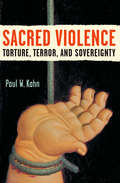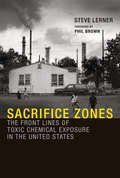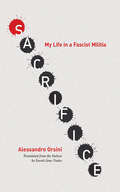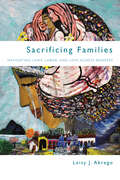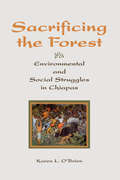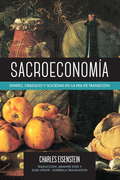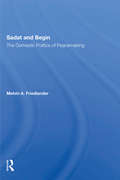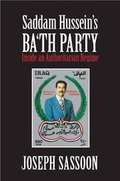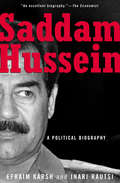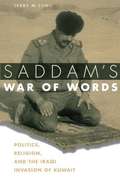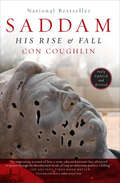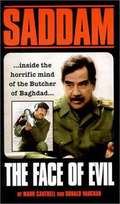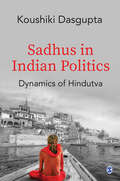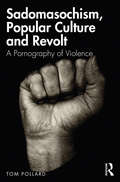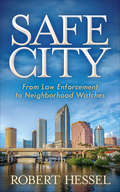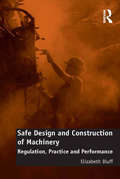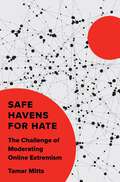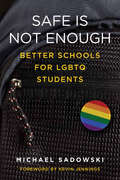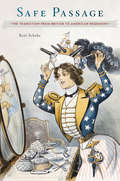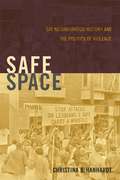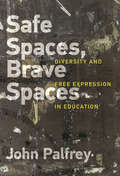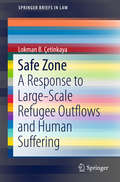- Table View
- List View
Sacred Violence: Torture, Terror, and Sovereignty
by Paul W. KahnInSacred Violence, the distinguished political and legal theorist Paul W. Kahn investigates the reasons for the resort to violence characteristic of premodern states. In a startling argument, he contends that law will never offer an adequate account of political violence. Instead, we must turn to political theology, which reveals that torture and terror are, essentially, forms of sacrifice. Kahn forces us to acknowledge what we don't want to see: that we remain deeply committed to a violent politics beyond law. Paul W. Kahn is Robert W. Winner Professor of Law and the Humanities at Yale Law School and Director of the Orville H. Schell, Jr. Center for International Human Rights. Cover Illustration: "Abu Ghraib 67, 2005" by Fernando Botero. Courtesy of the artist and the American University Museum.
Sacred and Secular
by Pippa Norris Ronald InglehartThis book develops a theory of existential security. It demonstrates that the publics of virtually all advanced industrial societies have been moving toward more secular orientations during the past half century, but also that the world as a whole now has more people with traditional religious views than ever before. This second edition expands the theory and provides new and updated evidence from a broad perspective and in a wide range of countries. This confirms that religiosity persists most strongly among vulnerable populations, especially in poorer nations and in failed states. Conversely, a systematic erosion of religious practices, values and beliefs has occurred among the more prosperous strata in rich nations.
Sacrifice Zones: The Front Lines of Toxic Chemical Exposure in the United States (The\mit Press Ser.)
by Steve LernerThe stories of residents of low-income communities across the country who took action when pollution from heavy industry contaminated their towns.Across the United States, thousands of people, most of them in low-income or minority communities, live next to heavily polluting industrial sites. Many of them reach a point at which they say “Enough is enough.” After living for years with poisoned air and water, contaminated soil, and pollution-related health problems, they start to take action—organizing, speaking up, documenting the effects of pollution on their neighborhoods.In Sacrifice Zones, Steve Lerner tells the stories of twelve communities, from Brooklyn to Pensacola, that rose up to fight the industries and military bases causing disproportionately high levels of chemical pollution. He calls these low-income neighborhoods “sacrifice zones.” And he argues that residents of these sacrifice zones, tainted with chemical pollutants, need additional regulatory protections.Sacrifice Zones goes beyond the disheartening statistics and gives us the voices of the residents themselves, offering compelling portraits of accidental activists who have become grassroots leaders in the struggle for environmental justice and details the successful tactics they have used on the fenceline with heavy industry.
Sacrifice: My Life in a Fascist Militia
by Alessandro OrsiniAlessandro Orsini is one of Italy's premier analysts of political extremism. His investigation of the beliefs and mind-sets of Europe's political fringe has largely focused on anarchist and far-left groups, but in Sacrifice he turns his inquiry to the rapidly expanding neofascist movement. He joined local groups of a neofascist organization he names Sacrifice in two neighboring cities with very different political cultures. In this gripping, "insider" book, which features dialogues with various militia members, Orsini shows how fascists live day to day, how they understand their world, and how they build a parallel universe in which the correctness and probity of their attitudes are clear. Orsini describes the long, troubled process by which these two groups slowly accepted him as an investigatoractivist and later expelled him for his ideologically uncommitted stance and refusal to subject his observations to censorship. His activities as a fascist were often mundane: leafleting, distributing food parcels to the indigent, and attending public rallies. In Sacrifice, Orsini describes from within the masculine ethos of the militias, the groups' relations with local police and politicians, and the central role of violence and anticommunist actions in building a sense of fascist community.
Sacrificing Families: Navigating Laws, Labor, and Love Across Borders
by Leisy J. AbregoWidening global inequalities make it difficult for parents in developing nations to provide for their children, and both mothers and fathers often find that migration in search of higher wages is their only hope. Their dreams are straightforward: with more money, they can improve their children's lives. But the reality of their experiences is often harsh, and structural barriers—particularly those rooted in immigration policies and gender inequities—prevent many from reaching their economic goals. Sacrificing Families offers a first-hand look at Salvadoran transnational families, how the parents fare in the United States, and the experiences of the children back home. It captures the tragedy of these families' daily living arrangements, but also delves deeper to expose the structural context that creates and sustains patterns of inequality in their well-being. What prevents these parents from migrating with their children? What are these families' experiences with long-term separation? And why do some ultimately fare better than others? As free trade agreements expand and nation-states open doors widely for products and profits while closing them tightly for refugees and migrants, these transnational families are not only becoming more common, but they are living through lengthier separations. Leisy Abrego gives voice to these immigrants and their families and documents the inequalities across their experiences.
Sacrificing Soldiers on the National Mall
by Kristin Ann HassFor the city’s first two hundred years, the story told at Washington DC’s symbolic center, the National Mall, was about triumphant American leaders. Since 1982, when the Vietnam Veterans Memorial was dedicated, the narrative has shifted to emphasize the memory of American wars. In the last thirty years, five significant war memorials have been built on, or very nearly on, the Mall. The Vietnam Veterans Memorial, the Korean War Veterans Memorial, the Women in Military Service for America Memorial, The National Japanese American Memorial to Patriotism During WWII, and the National World War II Memorial have not only transformed the physical space of the Mall but have also dramatically rewritten ideas about U.S. nationalism expressed there. In Sacrificing Soldiers on the National Mall, Kristin Ann Hass examines this war memorial boom, the debates about war and race and gender and patriotism that shaped the memorials, and the new narratives about the nature of American citizenship that they spawned. Sacrificing Soldiers on the National Mall explores the meanings we have made in exchange for the lives of our soldiers and asks if we have made good on our enormous responsibility to them.
Sacrificing The Forest: Environmental And Social Struggle In Chiapas
by Karen O'BrienThe Selva Lacandona of Chiapas, Mexico has received a tremendous amount of attention since the Zapatista uprising began in 1994. Concerns have focused on both the rapid rate of deforestation in Mexico's largest tropical rain forest and the social marginalization of its inhabitants, which is considered to be a root cause of the uprising. In this book, Karen O'Brien presents an insightful analysis of how deforestation and social struggles are related in this region and then considers the implications of these links for the remaining forest.A critical analysis of deforestation rates and patterns in the Selva Lacandona region provides the point of departure for this study. Using satellite imagery and her own field work, O'Brien presents an original estimate of forest loss. She then uses an approach derived from political ecology to trace the links between social processes and deforestation. Instead of focusing exclusively on the driving forces of deforestation, she argues that an analysis of the countervailing forces of conservation efforts is crucial to understanding the configuration of the present-day forest and the conflicts that surround it. Unless these forces can be fused, O'Brien contends, the future of the Selva Lacandona will continue to be shaped by the tensions among social, economic, and environmental objectives.A valuable tool for scholars of deforestation, environmental change, and political ecology, Sacrificing the Forest will also be of interest to readers trying to understand the current situation in Chiapas.
Sacroeconomía
by Charles Eisenstein Susa Oñate Arianne SvedSacroeconomía analiza la historia del dinero desde las antiguas economías del obsequio hasta el capitalismo moderno, revelando hasta qué punto el sistema monetario ha contribuido a la alienación, la competencia y la escasez, ha destruido el sentimiento de comunidad y ha obligado al crecimiento ilimitado. Estas tendencias han llegado a su extremo hoy en día. Sin embargo, tras su derrumbe podríamos hallar una gran oportunidad para acometer la transición hacia un modo de ser más interconectado, ecológico y sostenible. Este libro trata de la transformación que deberá experimentar --y que ya experimenta-- el sistema monetario para encarnar dicha transición. Sacroeconomía ofrece una síntesis amplia que integra teoría, políticas y prácticas, y examina conceptos vanguardistas de la Nueva Economía, entre ellos la moneda de interés negativo, la moneda local, la economía basada en los recursos, las economías del obsequio y la restauración del procomún. El autor, Charles Eisenstein, sopesa también las dimensiones personales de esta transición, dirigiéndose a quienes aspiran a un "modo de subsistencia correcto" y a vivir en consonancia con sus ideales en un mundo aparentemente gobernado por el dinero. Recurriendo a una larga tradición de pensamiento económico convencional y no convencional, Sacroeconomía presenta una visión original a la vez que sensata, radical a la vez que moderada; una visión de creciente relevancia ante la crisis, cada vez más profunda, de nuestra civilización.
Sadat And Begin: The Domestic Politics Of Peacemaking
by Melvin A FriedlanderThe architects of the Camp David process expected their efforts to become a broad and inclusive framework for peace in the Middle East. Dr. Friedlander's book demonstrates how domestic factors affecting policy decisions made in both Cairo and Jerusalem prevented Sadat and Begin from embracing a structure that would yield a more comprehensive arrangement. Sadat, for example, confronted an antipeace movement in Egypt, strengthened by then-Vice President Mubarak's ties to the military-security establishment and his alliance with members of the Arab nation's diplomatic corps. Begin was opposed by Israeli conservatives who saw the Camp David formulas as leading to a peace that would jeopardize Israel's security. Both leaders, Dr. Friedlander concludes, were able ultimately to guide their nations toward approval of the peace initiative primarily because of their mastery of techniques of domestic intra-elite bargaining.
Saddam Hussein's Ba'th Party
by Joseph SassoonThe Ba'th Party came to power in 1968 and remained for thirty-five years, until the 2003 U.S. invasion. Under the leadership of Saddam Hussein, who became president of Iraq in 1979, a powerful authoritarian regime was created based on a system of violence and an extraordinary surveillance network, as well as reward schemes and incentives for supporters of the party. The true horrors of this regime have been exposed for the first time through a massive archive of government documents captured by the United States after the fall of Saddam Hussein. It is these documents that form the basis of this extraordinarily revealing book and that have been translated and analyzed by Joseph Sassoon, an Iraqi-born scholar and seasoned commentator on the Middle East. They uncover the secrets of the innermost workings of Hussein's Revolutionary Command Council, how the party was structured, how it operated via its network of informers and how the system of rewards functioned.
Saddam Hussein: A Political Biography (Books That Changed the World)
by Efraim Karsh Inari Rautsi“Probably the best biography of Saddam Hussein…[it] presents a coherent view of a man who has generated a good deal of mythology” (Roger Hardy, BBC World Service). Authors Efraim Karsh and Inari Rautsi, experts on Middle East history and politics, have combined their expertise to write what is largely considered the definitive work on Iraq’s fifth president. Drawing on a wealth of Iraqi, Arab, Western, and Israeli sources, including interviews with people who have had close contact with Saddam Hussein throughout his career, the authors trace the meteoric transformation of an ardent nationalist and obscure Ba’ath party member into a dictator and geopolitical player.From Saddam’s key role in the violent coup that brought the Ba’ath party to power, to the Iran-Iraq War, the Gulf War, and beyond, Karsh and Rautsi present a detailed biography that skillfully interweaves analysis of Gulf politics and history. Now with a new introduction and epilogue, this authoritative biography is essential for understanding the life and influence of this modern tyrant.
Saddam's War of Words: Politics, Religion, and the Iraqi Invasion of Kuwait
by Jerry M. LongFrom a Western perspective, the Persian Gulf War of 1990-1991 largely fulfilled the first President Bush's objective: "In, out, do it, do it right, get gone. That's the message." But in the Arab world, the causes and consequences of Saddam Hussein's invasion of Kuwait and his subsequent defeat by a U.S.-led coalition were never so clear-cut.<P><P> The potent blend of Islam and Arab nationalism that Saddam forged to justify the unjustifiable--his invasion of a Muslim state--gained remarkable support among both Muslims and Arabs and continued to resonate in the Middle East long after the fighting ended. Indeed, as this study argues in passing, it became a significant strand in the tangled web of ideologies and actions that led to the attacks of 9/11. <P><P> This landmark book offers the first in-depth investigation of how Saddam Hussein used Islam and Arab nationalism to legitimate his invasion of Kuwait in the eyes of fellow Muslims and Arabs, while delegitimating the actions of the U.S.-led coalition and its Arab members. Jerry M. Long addresses three fundamental issues: how extensively and in what specific ways Iraq appealed to Islam during the Kuwait crisis; how elites, Islamists, and the elusive Arab "street," both in and out of the coalition, responded to that appeal and why they responded as they did; and the longer-term effects that resulted from Saddam's strategy.
Saddam: His Rise & Fall
by Con CoughlinInsightful, penetrating, and shocking, the defining biography of Iraq's deposed tyrantDrawing on an unparalleled network of sources, contacts, and firsthand testimonies, Con Coughlin takes us to the center of Saddam Hussein's complex, bewildering regime -- and beyond. Fully updated and revised, Saddam: His Rise and Fall meticulously describes how Hussein took power and immediately set about controlling every aspect of Iraqi life.Coughlin examines Hussein's regime both before and after its fall, exploring the contradictions of Saddam's private life: his sponsoring of Islamic fundamentalism while whiskey drinking and womanizing as well as his reliance on and celebration of family negated by his violent and temperamental treatment of them. With evidence from family members, servants, and staff, Saddam: His Rise and Fall is unique in its close-up representation of this elusive and secretive world.In all-new chapters and an epilogue, and with shocking new disclosures, Coughlin also vividly recounts the last few months of Saddam's reign and his eventual capture by American forces.
Sadddam: The Face Of Evil, Inside the Horrific Mind of the Butcher of Baghdad
by Mark Cantrell Donald VaughnWith those heartfelt words, President Bush assured the people of Iraq that the vicious, blood-soaked rule of Saddam Hussein - reviled worldwide as the ultimate Face of Evil - would soon be coming to a permanent end. For nearly 30 years, Saddam had governed his anguished nation through torture and intimidation and death, quickly silencing all who dared oppose him. The list of his crimes against humanity includes summary executions of political dissidents and potential threats to his rule; the use of deadly the destruction of entire villages; the creation of horrifying weapons of mass destruction and continued threats of violence and bloodshed against the United States and Iraq's terrified neighbors.
Sadhus in Indian Politics: Dynamics of Hindutva
by Koushiki DasguptaSadhus in Indian Politics: Dynamics of Hindutva maps the changing face of contemporary Hindu politics, evaluating the influence of sadhus (ascetics) on the course of politics in India. This book explores the anxieties around ascetic engagement with public affairs, understanding politics as janaseva and polities as rajniti, and the authority exercised by these sadhus. It investigates the spirit of ‘individualism’ reflected by the sadhus in the organized and unorganized domains of politics, and traces the dialectics of ‘Hindutva’ reflected through selected case studies, exposing the patterns of how the sadhus got involved in the muddled world of politics. This book also demonstrates the uneasy conflict between the modern Hindu right wing and Hindu traditionalists with their advocacy of Sanatan Dharma. It turns towards sadhus and gurus to explore the ‘Hindu-ness’ of the Hindus and confronts the metanarrative of Hindutva offered by various institutions.
Sadomasochism, Popular Culture and Revolt: A Pornography of Violence
by Tom PollardSadomasochism, Popular Culture and Revolt: A Pornography of Violence explores powerful connections between violent pornography and current gender wars, generational conflicts, political struggles, and racial and ethnic unrest. Long before these conflicts dominated headlines worldwide, they become embedded and contextualized in popular culture. Tracing the history of today’s popular porn genres, including torture porn, revenge porn, war porn, and fascist porn, Tom Pollard reveals a "sadomasochistic trope" of fictional and real sexual violence and sexual justice that had largely remained hidden and suppressed. Today it has exploded into public awareness by mass movements like #MeToo demanding justice for sexual assault victims. This movement joins other recent social movements, including Black Lives Matter and advocates of safety from gun violence, which, along with #MeToo, constitute a "revolt of submissives" no longer willing to endure unwanted violence. This thoughtful examination of the history and content of violent pornography reveals portentous patterns and developing trends. By examining pornography’s violent content, Pollard forces us to confront wider social and cultural violence. Sadomasochism, Popular Culture and Revolt will be of great interest to scholars of gay and lesbian studies and queer studies, while being a vital text for undergraduate and graduate instructors of social movement studies in sociology, political science, American Studies, and history.
Safe City: From Law Enforcement to Neighborhood Watches
by Robert HesselA timely books that details the concerted effort and integration of new technology it takes to make communities safer for everyone. It&’s a basic human right to feel and be safe in your community—where you live, work, and play. But, few people know or understand everything it takes to make this possible, including making high-tech solutions available to local law enforcement and first responders. From fire departments detecting fires within seconds with thermal imaging to police departments detecting gunfire immediately through gunshot detection sensors, technology continues to evolve daily. Even surveillance cameras have taken great strides from the grainy images of years past, and just one camera can make a difference (read about how police identified the Boston Marathon bombers through a department store&’s video camera inside!). Safe City teaches the public how to harden targets and protect their homes, businesses, communities, themselves, and their loved ones. It takes a community effort to help reduce and prevent crime, and Safe City answers the questions people have along with pointing out many more that should be asked. &“As someone who is politically active, and involved with urban development, this book is like a playbook for mayors, city council, and county commissioners.&”—Topher Morrison, author of The Profitable CEO and managing director of Key Person of Influence &“Provides a fact-filled insight into community policing . . . This a good read that delivers a solid understanding of the &‘how and why&’ of the future of community policing in America.&” —Retired Deputy Chief Metro Detroit Police Department
Safe Design and Construction of Machinery: Regulation, Practice and Performance
by Elizabeth BluffThe origin of this book is the compelling evidence that a high proportion of machinery-related deaths and injuries are attributable to genuine and serious risks originating within machine design and construction. This trend continues despite significant legal obligations, notably the European regulatory regime giving effect to the Machinery Directive (among others), and a substantial body of specialist knowledge originating in the disciplines of human factors and safety engineering. Grounded in empirical research with machinery manufacturers, this book aims to elucidate the factors and processes shaping firms’ performance for machinery safety, and considers their compatibility with legal obligations. Through a unique blending of rich empirical data coupled with safety, human factors, socio-legal and learning scholarship, the book provides both a nuanced account of firms’ performance for machinery safety, and makes conceptual and theoretical contributions to understanding and explaining their performance. Specifically, the book elucidates the role of knowledge and motivational factors - and how these are constituted - in shaping firms’ performance. It reveals the multiple state and non-state influences that create plural responses among manufacturing firms, which typically operate in supply chains and networks, and often globally. These insights provide the foundations to enhance regulatory design, and the book’s conclusion recommends some innovative directions for regulatory interventions to sustain the safe design and construction of machinery.
Safe Havens for Hate: The Challenge of Moderating Online Extremism
by Tamar MittsWhy efforts to moderate harmful content on social media fail to stop extremistsContent moderation on social media has become one of the most daunting challenges of our time. Nowhere is the need for action more urgent than in the fight against terrorism and extremism. Yet despite mass content takedowns, account suspensions, and mounting pressure on technology companies to do more, hate thrives online. Safe Havens for Hate looks at how content moderation shapes the tactics of harmful content producers on a wide range of social media platforms.Drawing on a wealth of original data on more than a hundred militant and hate organizations around the world, Tamar Mitts shows how differing moderation standards across platforms create safe havens that allow these actors to organize, launch campaigns, and mobilize supporters. She reveals how the structure of the information environment shapes the cross-platform activity of extremist organizations and movements such as the Islamic State, the Proud Boys, the Oath Keepers, and QAnon, and highlights the need to consider the online ecosystem, not just individual platforms, when developing strategies to combat extremism.Taking readers to the frontlines of the digital battleground where dangerous organizations operate, Safe Havens for Hate sheds critical light on how governments and technology companies grapple with the tension between censorship and free speech when faced with violence, hate, and extremism.
Safe Is Not Enough: Better Schools for LGBTQ Students (Youth Development and Education Series)
by Michael SadowskiSafe Is Not Enough illustrates how educators can support the positive development of LGBTQ students in a comprehensive way so as to create truly inclusive school communities. Using examples from classrooms, schools, and districts across the country, Michael Sadowski identifies emerging practices such as creating an LGBTQ-inclusive curriculum; fostering a whole-school climate that is supportive of LGBTQ students; providing adults who can act as mentors and role models; and initiating effective family and community outreach programs. While progress on LGBTQ issues in schools remains slow, in many parts of the country schools have begun making strides toward becoming safer, more welcoming places for LGBTQ students. Schools typically achieve this by revising antibullying policies and establishing GSAs (gay-straight student alliances). But it takes more than a deficit-based approach for schools to become places where LGBTQ students can fulfill their potential. In Safe Is Not Enough, Michael Sadowski highlights how educators can make their schools more supportive of LGBTQ students&’ positive development and academic success.
Safe Passage: The Transition from British to American Hegemony
by Kori SchakeHistory records only one peaceful transition of hegemonic power: the passage from British to American dominance of the international order. To explain why this transition was nonviolent, Kori Schake explores nine points of crisis between Britain and the U.S., from the Monroe Doctrine to the unequal “special relationship” during World War II.
Safe Space: Gay Neighborhood History and the Politics of Violence
by Christina B. HanhardtWinner, 2014 Lambda Literary Award in LGBT Studies Since the 1970s, a key goal of lesbian and gay activists has been protection against street violence, especially in gay neighborhoods. During the same time, policymakers and private developers declared the containment of urban violence to be a top priority. In this important book, Christina B. Hanhardt examines how LGBT calls for "safe space" have been shaped by broader public safety initiatives that have sought solutions in policing and privatization and have had devastating effects along race and class lines. Drawing on extensive archival and ethnographic research in New York City and San Francisco, Hanhardt traces the entwined histories of LGBT activism, urban development, and U. S. policy in relation to poverty and crime over the past fifty years. She highlights the formation of a mainstream LGBT movement, as well as the very different trajectories followed by radical LGBT and queer grassroots organizations. Placing LGBT activism in the context of shifting liberal and neoliberal policies, Safe Space is a groundbreaking exploration of the contradictory legacies of the LGBT struggle for safety in the city.
Safe Spaces, Brave Spaces: Diversity and Free Expression in Education
by John PalfreyHow the essential democratic values of diversity and free expression can coexist on campus. Safe spaces, trigger warnings, microaggressions, the disinvitation of speakers, demands to rename campus landmarks—debate over these issues began in lecture halls and on college quads but ended up on op-ed pages in the New York Times and the Wall Street Journal, on cable news, and on social media. Some of these critiques had merit, but others took a series of cheap shots at “crybullies” who needed to be coddled and protected from the real world. Few questioned the assumption that colleges must choose between free expression and diversity. In Safe Spaces, Brave Spaces, John Palfrey argues that the essential democratic values of diversity and free expression can, and should, coexist on campus. Palfrey, currently Head of School at Phillips Academy, Andover, and formerly Professor and Vice Dean at Harvard Law School, writes that free expression and diversity are more compatible than opposed. Free expression can serve everyone—even if it has at times been dominated by white, male, Christian, heterosexual, able-bodied citizens. Diversity is about self-expression, learning from one another, and working together across differences; it can encompass academic freedom without condoning hate speech.Palfrey proposes an innovative way to support both diversity and free expression on campus: creating safe spaces and brave spaces. In safe spaces, students can explore ideas and express themselves with without feeling marginalized. In brave spaces—classrooms, lecture halls, public forums—the search for knowledge is paramount, even if some discussions may make certain students uncomfortable. The strength of our democracy, says Palfrey, depends on a commitment to upholding both diversity and free expression, especially when it is hardest to do so.
Safe Zone: A Response to Large-Scale Refugee Outflows and Human Suffering (SpringerBriefs in Law)
by Lokman B. ÇetinkayaUsing legal arguments consistent with international law, this book explores whether and under which circumstances a State (or States) may establish and militarily enforce safe zones in countries that produce large-scale refugee outflows so as to protect its (or their) own interests by averting said outflows, as well as to alleviate human suffering in today’s world of civil and internal warfare.Though large-scale refugee outflows have become an increasingly frequent problem in inter-state relations, international law offers no clear remedy. Accordingly, interpretation and adaptation of the existing rules and principles of international law, in addition to State practice and the jurisprudence of international courts, are required in order to find appropriate and lawful responses to such situations. The book examines countermeasures, necessity and humanitarian intervention as possible legal grounds to justify the establishment of safe zones.Since the proposal of a safe zone for Syria remains on the international community’s agenda, the specific conditions of this case are particularly addressed in order to assess the suitability and legality of a possible safe zone in Syria.
